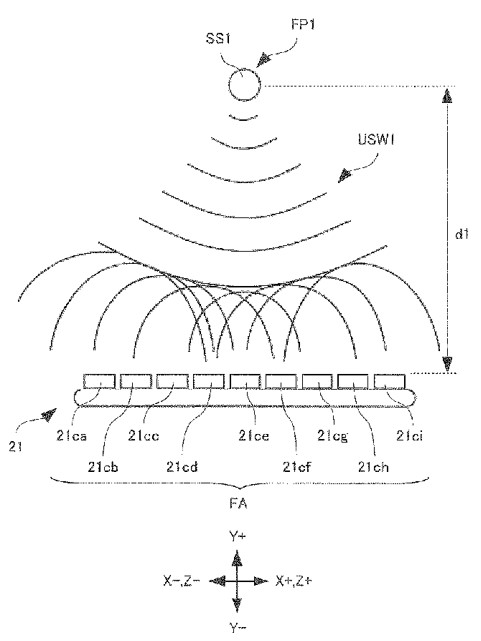Japanese Patent Case Summary: 2023 (Gyo-Ke) No. 10078 – Intellectual Property High Court (April 24, 2025)
“Audio Controller, Ultrasonic Speaker, Audio System and Program”
Overview:
This case upheld a trial decision stating that a request for a patent invalidation trial on the grounds of misappropriation and violation of a joint application was not established.
▶Summary of Judgment and Link to Full Text (Japanese)
Main Issue:
The finding of the inventors for the invention of this case (whether A et al., the representative directors of the defendants listed as inventors on the patent publication for this case, are inventors).
Summary:
An inventor is understood as referring to a person who was actually involved in the creation of the technical concept of the invention, and above all, the completion of the features of the invention relating to the means of solving a technical problem in the art; i.e., a person who was involved in activities to constitute a concrete and objective creation to an extent that would enable a person skilled in the art to work the features of the invention.
As such, …the technical problem of the invention of this case is to remove constraints from a use environment that would prevent use of an audio system constituted by a plurality of speakers, each of which must be arranged around a listener, when, for example, the speakers cannot be set up behind the listener.
…an ultrasonic speaker (parametric speakers), comprising a plurality of ultrasonic transducers and utilizing the phenomenon whereby ultrasonic waves modulated along an audible sound waveform (carrier wave) pass through the air to produce audible sound (autodemodulation), is itself…recognized as having also been a well-known technology as of about January 2013, which is when the defendants (note: the patent holders) assert that A et al. completed the invention of this case.
Invention 1 of this case, which is predicated upon such well-known technology, solves the technical problem by allowing the sound to reach the listener at a focal position (para. 0113) that can be optionally set by means of the audio controller recited in the claims. … That is, the portion of the claims reciting that the audio controller “comprising a means for controlling that generates a control signal for individually controlling each of the ultrasonic transducers based on the audio signal, and outputs the control signal to each of the ultrasonic transducers so that each of the ultrasonic transducers emits ultrasonic waves having a wave difference focused on the at least one focal position” is the inventive feature that solves the technical problem of the invention in this case.
… Even considering that the audible sound that can be generated by the experimental device for this case (note: the airborne ultrasonic focusing device manufactured by A and B, who is the defendant representative director in charge of technology, no later than April 2015) was an audible sound with rectangular waves that was modulated in a range of no more than 1023 Hz (in 1 Hz increments), the features of the invention for this case are constituted as a concrete and objective creation to an extent that would enable the skilled person to work them, and the invention of this case is recognized as having been completed. …
Based on the above, it cannot be said that C et al. (note: the plaintiff representative directors) constituted the features of the invention for this case as a concrete and objective creation to an extent that would enable the skilled person to work them, and the plaintiffs are not recognized as the inventors (joint inventors) of the invention for this case. On the other hand, the patent publication (Plaintiffs’ Exhibit 1) relating to the invention of this case lists A et al. as inventors, and thus, in light of the above findings and the overall purport of the arguments, it can be recognized that A et al. are the inventors of the invention for this case, and there is no evidence sufficient to overturn this.

FIG. 6 Explanatory diagram of behavior example 1 of the ultrasonic speaker of the present embodiment
Comments:
In the background of this case, the predecessor company of the defendants (the patent holders) created the subject experimental device embodying the invention of this case no later than April 2015, and then requested that the plaintiffs (the party requesting the invalidation trial) manufacture a prototype of the device. In order to make the prototype suitable for practical use, the plaintiffs incorporated their own knowledge and creative ideas in producing the prototype, and delivered it to the defendants’ predecessor company in November 2015. It was only about two years later, on October 3, 2017, that the defendants filed the patent application for the invention of this case. Given these circumstances, it is possible that the plaintiffs felt a sense of pride in having completed the invention of this case as something suitable for practical use. However, the features of the invention of this case as recited in the claims are evaluated as having been completed solely by A et al., and thus it must be said that the plaintiffs’ assertion is untenable.
The reason for the defendants’ delay in filing the patent application for the invention of this case is unknown, but if the defendant had filed the patent application after creating the experimental device and before requesting that the plaintiffs manufacture the prototype, it is likely that the present dispute would not have arisen. Furthermore, if the plaintiffs had filed an application for an invention that could be considered an improvement of the invention for this case before the patent application for the invention of this case was filed, this patent would not have been granted, and the plaintiffs might have been able to obtain a patent commensurate with their contribution. In any case, the importance of filing applications at an early stage is the lesson to be learned here.
Mitsuaki KOBIKI
